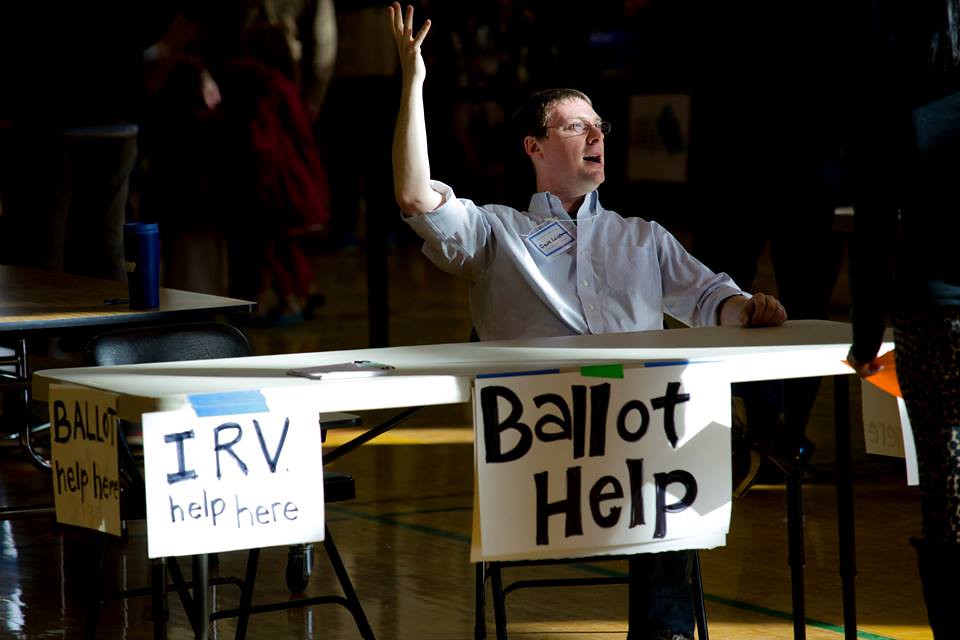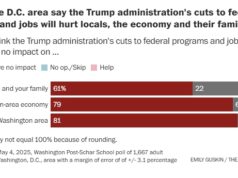( – promoted by lowkell)
Arlington Dems conducted a successful party nomination caucus yesterday using Instant-Runoff Voting (IRV). It should be used more.
Dave Leichtman is the DPVA Vice-chair for Tech and Communications
 On Jan 30 and Feb 1, Arlington Democrats conducted our nomination caucus (firehouse primary style) to choose the Democratic nominee for the upcoming April special election for County Board. ACDC has a record of holding smooth-running party-held primaries, and this time was no different in that respect. What was different, however, was the method of voting. For the first time in Arlington, voters were asked to rank their choices (1,2,3). This method is referred to as “Ranked Order Balloting” or “Preference Balloting” and is commonly used in many other countries, and in some other municipalities around the US. For example, Australia has used a “Single Transferable Vote” system of balloting in federal elections since 1918.
On Jan 30 and Feb 1, Arlington Democrats conducted our nomination caucus (firehouse primary style) to choose the Democratic nominee for the upcoming April special election for County Board. ACDC has a record of holding smooth-running party-held primaries, and this time was no different in that respect. What was different, however, was the method of voting. For the first time in Arlington, voters were asked to rank their choices (1,2,3). This method is referred to as “Ranked Order Balloting” or “Preference Balloting” and is commonly used in many other countries, and in some other municipalities around the US. For example, Australia has used a “Single Transferable Vote” system of balloting in federal elections since 1918.
While Arlington Dems weren’t the first to try this in VA – Charlottesville Dems tried it a few years ago – we have adopted it as our preferred method of caucus voting moving forward. It was fairly simple to conduct, and we provided extensive voter education around the election since the process was new. Despite the unfamiliarity of the process to many voters, ACDC found itself with a 99.7% success rate on unspoiled ballots (read more about the vote breakdowns on NLS).
I’d like to see other committees, and some day the Commonwealth, adopt Instant Runoff Voting for more elections. Read on to find out why.
Reason #1: It builds consensus
Preference balloting enables what’s called an “Instant Runoff.” Normally, in a single-election election, if you require the winner to achieve a majority of votes (as opposed to the commonly used plurality) and nobody does, it’s necessary to call a second runoff election. Asking people to vote twice incurs more costs, more voter fatigue, and reduces turnout. But if you allow voters to specify who their vote would go to in the event of a runoff, you enable an instant runoff. You can determine who gets a majority by reallocating the second-preference votes for voters whose candidates were eliminated in earlier rounds of balloting.
This is, in essence, more “free and fair.” Asking that a winning candidate receive a majority (or at least, in this case, a majority of preference votes), helps unify voters behind that candidate through investiture. It also simply increases the number of people who produced the result – a critical component when you consider that in a place like Arlington, the Democratic primary is likely to decide the general election.
Arlington’s test case was rather mundane – 3 candidates, doesn’t make for an exciting situation. But you can imagine past primaries with, say, 6 candidates where one could potentially win a plurality with less than 20% of the vote.
Reason #2: It encourages positive campaigning
One of the most destructive aspects of a primary campaign can often be the destructive pitting of mostly-like-minded individuals against each other. However, when any candidate could win based on second-preference votes in an instant-runoff, it behooves candidates to “play nice” in order to court voters’ second preference vote.
What’s next?
Because of the simplicity of conducting the balloting and counting the results, any Dem committee in VA ought to be able to adopt IRV for voting. But why stop there?
The 8th Congressional District has at least 8 declared candidates for the June 10th primary, and it’s likely to be 11 by the end of this week. That means that in a traditional primary, one of these candidates could win a plurality with a single digit percentage. In Yiddish, we call that a shanda. But alas, there’s nothing to be done. Unless The Party ran the election as a multi-location firehouse primary – and nobody’s seriously suggesting that for an entire congressional district – traditional single-candidate voting is the only method allowed to localities in Virginia. We should encourage the General Assembly to look into alternatives like IRV to solve exactly this situation.
If you’d like to know more about alternative voting methods, I highly encourage you to check out Fair Vote (http://www.fairvote.org). They are a non-profit that does excellent advocacy around alternative voting methods, and they were instrumental in helping ACDC prepare voter education materials for our caucus.



 Sign up for the Blue Virginia weekly newsletter
Sign up for the Blue Virginia weekly newsletter







